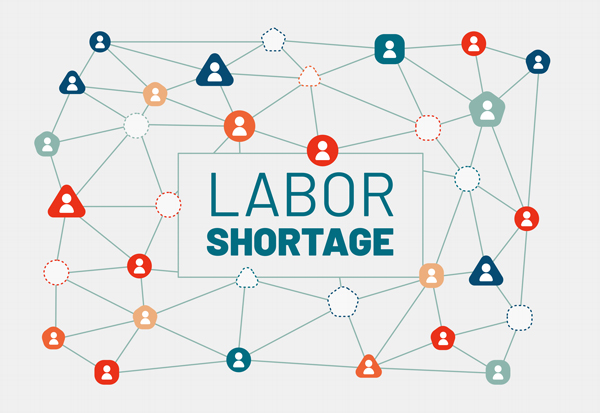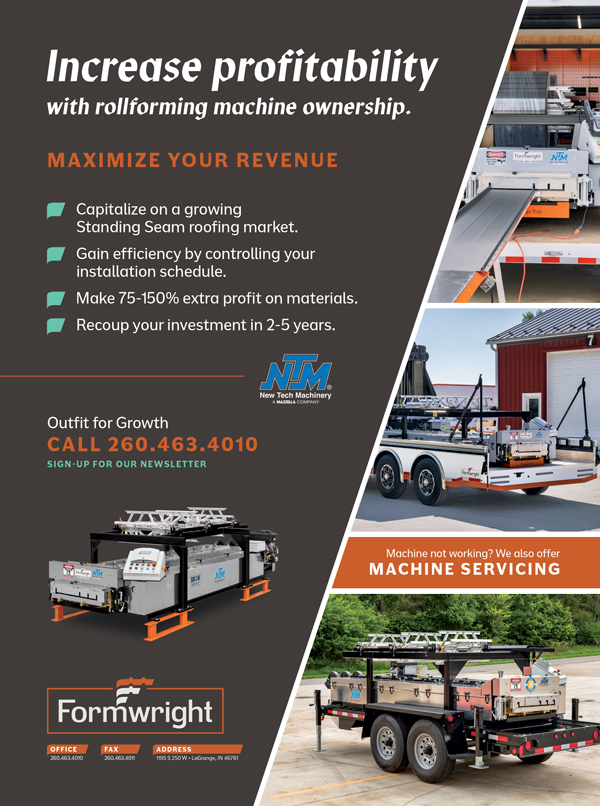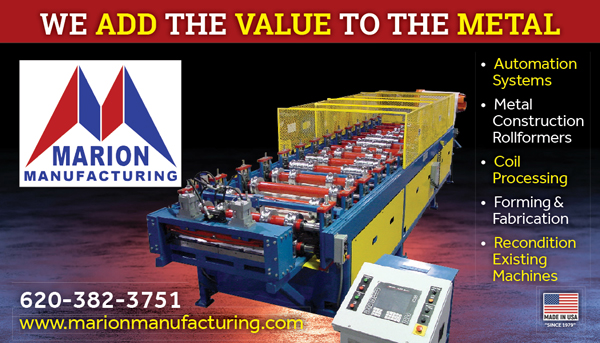By Rick Zand, New Tech Machinery
The labor shortage in the U.S. is a growing problem faced by many industries, including manufacturers and contractors, even as we’ve seen an increased demand for metal in building construction. According to Metal Construction News, 42% of top metal builders reported labor as the biggest challenge they faced in 2022, up from 23% reported in 2021. Imagine you have the machines and materials to meet the needs and the jobs are lined up, but you can’t find workers to fabricate and install panels.
Reasons for the Persistent Labor Shortage
Reason 1: Decrease in Birth Rate
Starting out as a roofer or in metal panel production is generally a young person’s game. Many of these entry-level positions tend to attract those from 18-22 years old.
In a perfect world, this isn’t a problem. There’s always a high school or a trade school grad searching for a job or career opportunity. However, we’ve seen a decline in the population growth rate in the U.S. In the 1950s, the growth rate approached 2%. Until the end of the 20th century, it consistently remained above or very close to 1%, a number we haven’t seen since 2007. In 2023, it reached only .50%, which was actually an increase over 2021 and 2022, which saw .31% and .38% increases, respectively.
This is not good news for the workforce, coming after a wave of Baby Boomer retirements. In fact, the last time it reached 1.50% was in 1963, and that was a decrease from the previous decade, which saw peaks as high as 1.98%. By 2035, adults 65 and older will outnumber children under the age of 18 for the first time in history.
The labor market in the U.S. is shrinking, a trend that is predicted to continue for years to come.
Reason 2: The Big Quit
According to the U.S. Chamber of Commerce, by the end of 2023, the U.S. had 9.5 million job openings but only 6.5 million available workers to fill them, leaving a deficit of 3 million jobs. This is partly due to the residual impact of the pandemic. During 2020-2022, employees received aid and relief due to layoffs and hiring freezes. We saw the availability of goods shrink due to disruption in the supply chain. We also saw what’s become known as the Great Resignation, also known as the Big Quit, where many workers simply left the workforce.
After, many laborers didn’t return to their jobs. They may have used their lockdown time to learn coding or other skills that made them marketable in the tech industry. Even now, more and more companies are dropping degree requirements from job descriptions as technical skills are valued over academic credentials. Additionally, if you’re a coder, programmer, or web designer, you can make a decent salary and not have to stand on a roof in the hot sun or in cold winter weather. For some, the pandemic provided an opportunity to regroup and perhaps move in another direction.
Lost income was another deterrent to returning to the workforce. According to Roofing Contractor, 68% of the workforce earned more on unemployment during the pandemic than they did working their regular jobs. Those who have returned to work or joined the workforce post-pandemic may not have the same work ethic as the pre-pandemic crews.
“Their expectations are different,” says Dave Susee, Vice President of Taylor Metal Products, a West Coast manufacturer. “They want more flexibility to come in when they want to. They may tell us they won’t come in before 9 a.m. Some of them are very good, but some haven’t developed a work ethic.”
In the end, the changes in financial circumstances, job options, and changing work expectations bite into the availability of roof and gutter installers.
Solutions to the Labor Dilemma
Although the demand for metal construction increases and the supply chain is close to the pre-pandemic flow of goods, the labor market remains in a downward spiral. While there probably isn’t one solution to the labor shortage, combined approaches may bolster your labor force.
Solution 1: Use a Workforce Service
Services like Labor Central will match you up with roofing crews online. Crews are available in all states, and their site will provide you with a list to choose from for residential and commercial work, as well as the type of roofs they install (metal, shingle, clay tile, etc.).
You must join as a member. Memberships are priced at $99 monthly or $999 annually (there is no fee for roofing crews). Once you join, you can contact the crews listed and receive job bids. It’s up to you to negotiate fees, as Labor Central does not serve as a go-between in this capacity.
Labor Central is easy to use either on your computer or through their app. While their service may not be a long-term solution, it can get you through a crunch. In the long run, however, you may want your own employees who you can train and supervise.
Solution 2: Attract and Develop Workers
Skills, skills, skills. If your workforce comprises skilled workers who can operate machines, leverage technology, and are educated in techniques, types of roofing, roofing measurement software, smart roofs, etc., they can establish themselves as industry professionals. Also, if you can create room for growth, say, as crew leaders, advancement in the field can be a motivator.
Developing an educated, skilled workforce takes time and investment. However, providing a hiring plan that includes training and professional development may attract new workers to the industry. Also, if you produce qualified professionals, you’re less likely to have turnover, and you’ll have a more productive, committed workforce.
Taylor Metal Products often hires entry-level warehouse workers and trains them for more advanced operational positions. That way, they can gauge their performance and work ethic and then promote from within.
Solution 3: Hire Documented Immigrants
Currently, we’re dealing with an influx of immigrants, and the government is expediting work permits to those residing here legally. Increasing work permits provides hiring opportunities for businesses desperate for workers. Contact local employment and job agencies to see if you can use them to acquire documented immigrant workers.
Solution 4: Join a Roofing Contractors Association
Joining a contractors association provides many benefits outside of engaging and recruiting workers. Roofing and metal associations also offer access to training programs, strategies for recruitment, and resources through articles, podcasts, networking, and more.
National associations like the National Roofing Contractors Association (NRCA) and the Metal Construction Association (MCA) offer training for roofers, including certifications for crew members, OSHA compliance, etc. Promoting training as a way of recruiting workers may attract those who hadn’t previously considered roofing as a profession.
NRCA offers members recruitment resources and expands the idea of career development through skills, safety, and technology training. NCRA also offers an online job bank to its members to locate qualified workers.
MCA membership provides access to their Metal University online training, which includes metal roofs, solar systems, sealants, and more. Roofers can receive training and certification online.
Which Workforce Solution Is Right for You?
Depending on your situation, a combination of solutions may best serve your workforce needs. A workforce service is a great quick fix if you must line up a crew for an immediate job. If you’re looking towards the long-term, you might include a recruitment tactic, such as hiring immigrants with work visas, recruiting and developing a skilled workforce, joining a roofers association, or a combination of approaches.
As mentioned at the beginning of the article, more people are retiring than are entering the workforce. With the dramatic decrease in birth rates, we’ll need more solutions to the tightening labor market on the road ahead. Beyond attracting workers, retention is imperative, especially if you’re investing in training. Maintaining a positive work environment and providing bonuses, rewards, and advancement opportunities will go a long way toward curbing turnover and keeping a well-trained, qualified workforce. MR






















